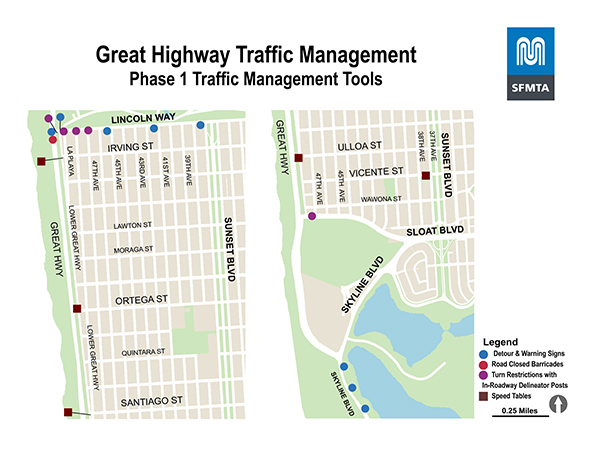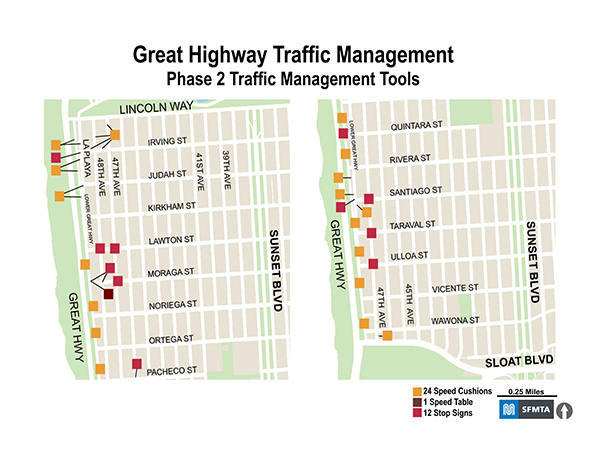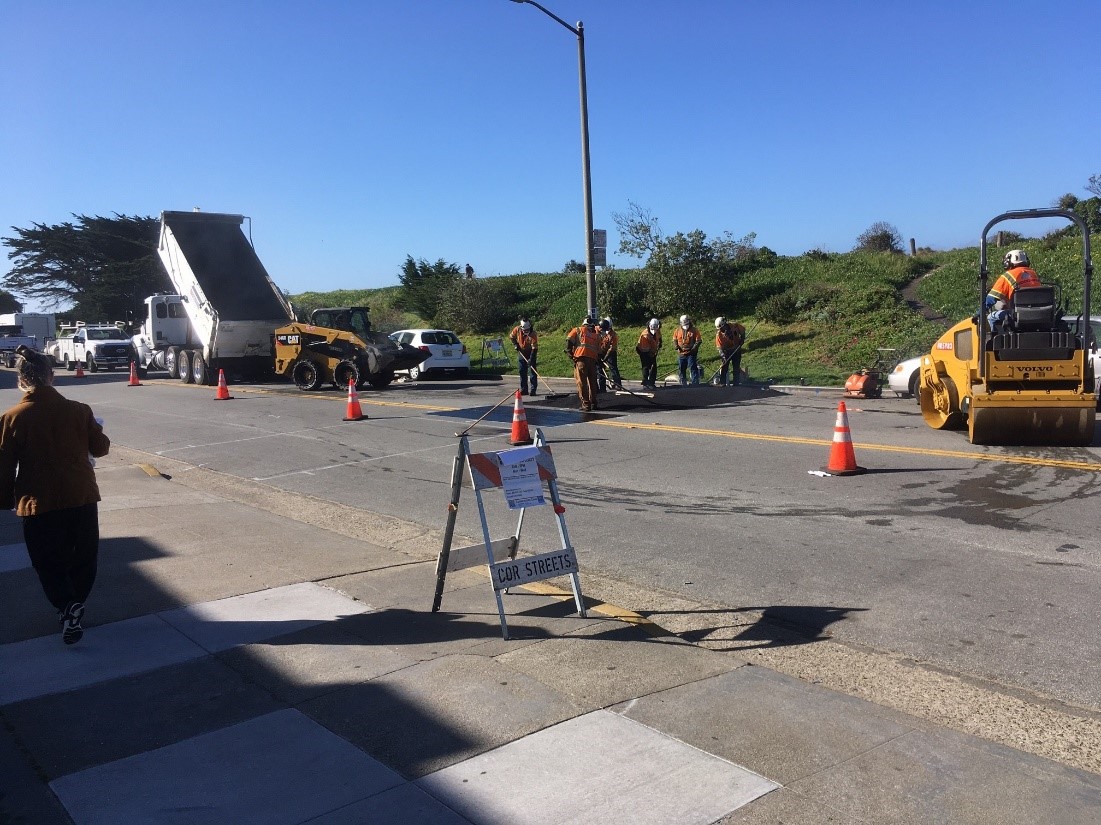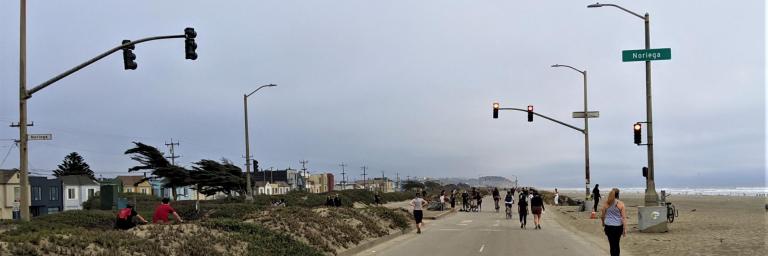Outer Sunset Traffic Calming Project Completed On Time!
SFMTA worked in partnership with the Recreation and Park Department to develop and implement a comprehensive and integrated traffic calming strategy that responds to the concerns that we heard from residents of the Outer Sunset. In early February 2021, funding for the SFMTA traffic calming strategy was approved by the San Francisco County Transportation Authority. The traffic calming measures were completed on time in April 2021 and address community concerns related to changing traffic patterns during the time that the Upper Great Highway was fully closed to vehicular traffic during the COVID-19 pandemic.
In April 2020, as part of the city’s COVID-19 response efforts, San Francisco temporarily repurposed the Upper Great Highway to be a car-free street that prioritizes families, people on bicycles and pedestrians. The change in use of the roadway has created an unrivaled and scenic public space and coastal promenade for thousands of people of every age, race and gender to have expanded opportunities for physically distanced recreation and essential trips during the COVID-19 pandemic.
SFMTA took actions to improve the safety conditions for those affected by the roadway changes. In 2020, the SFMTA installed signs, traffic delineators, speed tables and other measures at over 20 locations in the Outer Sunset to manage traffic on local streets and redirect traffic to routes such as 19th Avenue and Sunset Boulevard.



Project Information
The goal of the Outer Sunset Traffic Management Project is to increase safety for all members of the public by implementing immediate and medium-term traffic management improvements. The project addressed community concerns related to changing traffic patterns during the time that the Upper Great Highway is being used by families, bicyclists, and pedestrians during the COVID-19 pandemic.
The work included collecting traffic speed and volume data, evaluating current safety and traffic conditions, using traffic management tools such as signs and traffic diverters to manage traffic and improve safety, as well as identifying street and network changes that could complement future uses of the Great Highway.

Related Projects
- Completed
